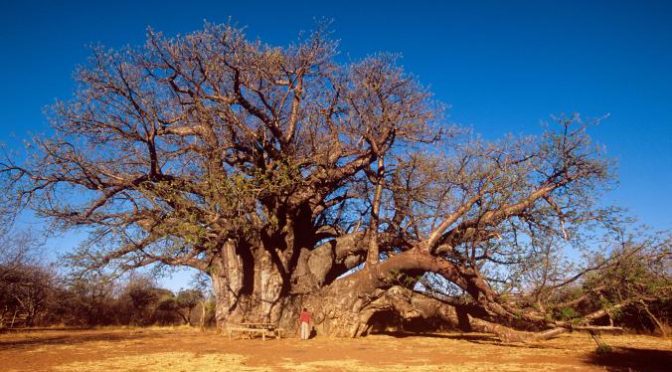Celebrating Plants and People
-
Saving A Forest To Save Penguins
The yellow-eyed penguin first got into trouble when large parts of its natural habitat were destroyed in the previous century. Farmers bulldozed and torched the forests where the penguin lived to make way for cattle and sheep. The Te Rere Reserve was founded in 1989, when Mr. Sutherland succeeded in persuading farmers not to destroy the forest on the southern tip of the South Island. Eventually, reforestation efforts allowed about 120 yellow-eyed penguins to nest in the scrub. In February 1995, however, a fire started by a neighboring farm spread to Te Rere, burning half the population. (Click on title for full story.)
-
Ripe Fruits’ Aroma Evolved To Attract Primates
Primates are among the most important seed dispersers in tropical ecosystems. Until recently, they have been considered to be primarily visual animals whose reliance on the sense of smell is limited. Yet several studies from the past years indicate that primates in fact possess a well-developed sense of smell. Thus, fruits that rely on primates’ seed dispersal services may have also evolved to advertise their ripeness and quality through ripe fruit aroma. (Click on title for full story.)
-
Madagascar’s Lemur Extinction And The Death Of The Forests
Sizeable fruit may once have conferred an evolutionary advantage for many trees, but it has now become a liability. The larger lemur species have died out and the seeds are too big for surviving lemurs to eat, the team reports. With the big lemurs gone, some plants are already doomed. Others are in a precarious position – many trees are now entirely dependent on the two largest surviving lemur species, the black-and-white ruffed lemur (Varecia variegata) and the red-ruffed lemur (Varecia rubra). (Click on title for full story.)
-
How Invasive Plants Can Make Forest Fires Worse
Biotic invasions have impacted ecosystems worldwide, and one of the greatest current challenges facing forest ecosystem management in the southern U.S. is the control of range expansions by invasive plant species. Among the more worrisome concerns related to invasive shrubs is their role as ‘ladder fuels,’ which increase the risk of crown fires. (Click on title for full story)
-
Plant Crucial To Wildlife Survival But No One Knows How It Grows
The nodding geebung is endangered, and nobody can work out how to germinate its seeds. Plant scientists are deploying every strategy they can think of: gauze gift bags, heat torture and forced smoke inhalation. But could the key lie in the digestive juices of an emu? (Click on title for full story.)
-
What A World Without Bees Would Be Like. Welcome To Macquarie Island
Remote Macquarie Island, halfway between New Zealand and Antarctica, has provided scientists with the first glimpse of a world without birds or bees. And, assuming you’re into colourful flowers, it’s not pretty. (Click on title for full story.)
-
Popular Pesticides Harm Endangered Plants And Animals
Almost all of the 1,700 most endangered plants and animals in the US are likely to be harmed by two widely used pesticides, an alarming new Environmental Protection Agency (EPA) analysis has found. (Click on title for full story.)
-
Pursuing The Elusive Explanation For Leaf Shape
If leaf shape is a functional response of plants to changes in the environment, then understanding its adaptive value — and how to molecularly manipulate it — will prove to be invaluable in breeding the next generation of crops and sustainably maintaining biodiversity and crop yield in future climates. (Click on title for full story.)
-

The Ancient Dance Of Survival: Baobabs And Elephants
They look like silent giants, but they’re not. They have moves (in slow-motion, yes), but over time they “can swell, shrink, curl, explode and creep about.” They are shape-shifters. And though locked in mortal combat with these dexterous, powerful mammals, the two sides have—for the moment anyway—achieved a pugilistic balance. They both throw punches, but neither is down for the count. Plus, both stay big and both stay strong. (Click on title for full story.)
-
Garden Of Youth Discovered? At least for yeast.
One of these groups of molecules is the most potent longevity-extending pharmacological intervention yet described in scientific literature: a specific extract of willow bark, (Click on title for full story.)
